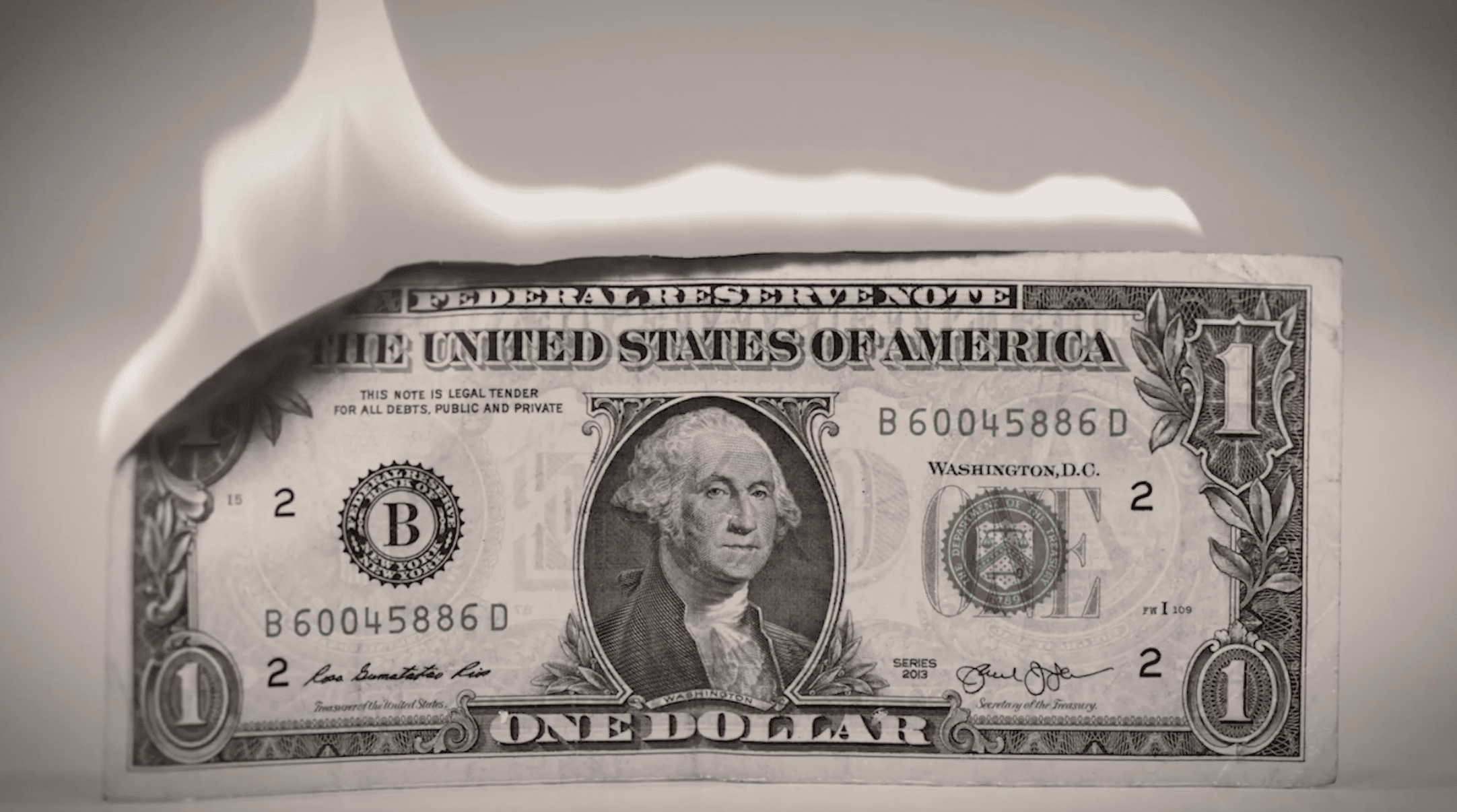What is the digital dollar?
And What Does It Mean For the U.S., Gold, and Other Currencies

To obtain a more thorough understanding of what is a digital dollar, or cbdc (central bank digital dollar), it is necessary to break it down into specifics.
The digital dollar, central bank digital currency, would serve as a settlement medium to meet the demands of the current digital world, allegedly creating a faster and more inclusive financial system.
The proposed U.S. Digital dollar, stated simply, would be an electronic or digital version of our present U.S. dollar. The digital dollar can be explained more clearly by observing these specific elements:
- Purpose and function
- Who will issue the digital currency?
- What will the digital dollar be backed by?
- How a cbdc differs from existing means of exchange?
- How will a U.S. digital dollar affect Americans’ lives?
Purpose and Function
What Happens if the U.S. Dollar Goes Digital?
The push by the present US administration to move towards exploration and possible adoption of a digital dollar involves a number of objectives. The concept of the central bank digital currency has been touted by numerous advocates as enabling faster, safer, and cheaper means of conducting payments. The same proponents regard paper currency as antiquated and rarely used and that exclusive use of a digital currency is simply the logical way forward.
Also, it is estimated that there are 4.5 – 5% of households have no access to a bank account for varying reasons. A digital dollar would provide the convenience to make and receive electronic payments and not be burdened by the high fees associated with check-cashing institutions or other conversion means.
At the present moment, as it relates to domestic transactions, there is very little real evidence of any benefit in terms of the speed or security of money exchange and transmission. However, these transactions would be subject to less anonymity and greater trackability. This point raises a ‘suspicious eyebrow’ among many libertarian-minded politicians and individuals as to the ‘true’ necessity or urgency for the mass adoption of a highly trackable digital currency and the many privacy concerns that follow.
According to many government analysts, a U.S. digital currency would provide an easier means of conducting cross-border transactions, international settlements, and remittances.
CBDCs and China’s Global Dominance
There are U.S. government concerns about the erosion of the US dollar’s supremacy as the world reserve currency and possible displacement by the other cbdc’s such as the Chinese digital yuan. The U.S. dollar’s ability to be leveraged on the international markets with as much ease as other currencies presently using digital instruments is an important aspect that should not be overlooked.
Also, with the rise of the BRICS nations, this multi-country conglomeration has presented its own unique challenges to the international currency market. This five-nation alliance’s currency would involve a mix of currencies, some digital. Among them, are the Chinese RMB Yuan, the Indian Rupee, the Russian Ruble, South African Rand, and the Brazilian Real.
In 2020, the Chinese Belt Road Initiative, which is the largest infrastructure project known. This system is seeking to combine Asia, Africa, and parts of Europe within a commerce and trade infrastructure that would settle transactions in the Chinese digital yuan. To give the read an idea of scale and size, this coalescing represents 75 percent of the human pollution.This would be a massive shift from from the U.S. dollar to the digital yuan.
In the last 2 years, the digital yuan, which settles all the Belt Road trades has conducted over 12 billion in successful transactions. This is merely the beginning.
According to Bhaskar Chakravorti, dean of global business at the Fletcher School at Tufts University, nearly 50% of international bank loans are dollar-based and almost 90% of foreign currency trading is dollar-denominated on at least one side of the transaction. Hence, there is increased interest and urgency by the U.S. government to deploy a digital dollar of its own in order to maintain this dominance within the international settlements sphere.
Who will issue the digital currency?
In the case of the U.S. digital dollar, the issuing body would be the U.S. central bank, the Federal Reserve, on behalf of the government. This gives rise to a great deal of concern given the recent track record of the Federal Reserve’s ‘easy money’ policies that have in large part given rise to the present rate of inflation.
There are also many concerns that about the greater inflating of the money supply with the issuing of a central bank digital currency. As you can see from the charts below, the ever-degrading value of the dollar when compared to the physical assets such as of gold.
Click the button below and watch the video to learn more about the economic consequences of the Federal Reserve’s monetary policies and how they affect our daily purchasing power.
What will the digital dollar be backed by?
Presently, the concept of the U.S. digital dollar would essentially have all the value and backing, or lack thereof depending who you ask, of the present physical fiat dollar.
Our U.S. dollars are known to be backed by the “full faith and credit” of the U.S. government. Again, depending on what ideological circles you ask, this statement may fill a person with either a sense of security and ease or, on the other hand, intense doubt and cynicism. The latter may be more likely and justified.
The U.S. dollar has not been backed by a tangible asset or commodity since 1971, when the Nixon administration took the U.S. dollar off the gold standard. As you can see from the charts above, the value of the U.S. dollar has not kept pace with the value of precious metals and increased acceleration of inflation after the 1971 departure from the gold standard.
There have been recent legislative proposals with the US Congress for a return to the gold standard: H.R. 9157. Time will tell if this legislation can gain any ground. As the US fiat dollar is continually diluted by inflation and massive fiscal deficits, there may be no other way to keep the USD from being completely eroded.
How a CBDC Differs from Existing Means of Exchange
Will CBDC replace cryptocurrency?
There have been many attempts to compare the cbdc to crypto-currency, more specifically Bitcoin. From a basic snapshot, yes, they are both appear to be digital currencies. But, more importantly, from purely functional standpoint, they could not be more different.
At its foundation, bitcoin is highly de-centralized, relies on block-chain technology, is backed by labor in the form of mining, and is more of a ‘store of value’ than a broadly adopted means of exchange.
The U.S. digital dollar, as it is presently being proposed, is a highly centralized, ‘faith-backed’ fiat currency that would be used primarily and broadly for the purpose of exchange. The digital dollar would be a cryptographic representation of the present fiat currency.
Hence, present cryptocurrencies such as Bitcoin, Ethereum, Cardano etc, and central bank digital currencies are not and should not be thought of as the same or used interchangeably.
Bringing the USD into the digital exchange marketplace does not add any innate or intrinsic value to the currency. Again, the government-issued currency, paper or digital, is not backed by anything but the government and central bank that is issuing it. Most modern G7 nation currencies are fiat in nature.
This policy of fiat-based currencies has not led to more stability, but more volatility and devaluation over time. This is, again, in large part due to the ability of central banks to print and create money from essentially ‘nothing’. The establishment of a digital currency changes none of this.
On the contrary, precious metals such as gold and silver have continued to appreciate over time despite the best efforts of markets and governments to manipulate their value.
As we mentioned early, the BRICS nations will be deploying their own currency on a mass scale in the coming years. It has been stated many times by these nations that this ‘basket of currencies would be backed by gold. This new currency poses major challenges to the U.S. dollar as the reserve currency as well as the former necessity of other nations hold dollars or ‘petrol-dollars’ in order but oil on the international markets.
With these considerations in mind, the United State’s concern over the Digital Dollar should be small when compared to the prospect of a new world currency backed by the value of gold and other precious metals in contrast to the ‘faith-based’ American fiat dollar. We will be covering the BRICS currency and its gold-backed nature in future articles.
How Will a U.S. Digital Dollar Affect American’s Lives?
As discussed previously, the U.S. government’s launch of a digital dollar will likely do very little to increase the purchasing power of the American currency. Will a central bank digital dollar provide some convenience for cross-border and international transactions? Certainly.
But with convenience comes trade-offs. The federal government will have greater control and access to your money and trackability of your purchases. In terms of privacy, this new method of transacting will erode such privacy.
This greater control of the currency by federal bodies could to even more manipulation of the money supply. This concern has become all the more evident in recent years as inflation reached historic highs when once the many bureaucrats in charge stated inflation was transitory. With the present recession that Americans are experiencing, these same bureaucrats are attempting to redefine what a recession is or are in complete denial that it is occurring.
This begs the question, do we really want to place more control of our currency in the hands of these same parties? I am sure, judging from the tone of this writer, you can guess what my answer would be. To take more control of your wealth to hedge against the cycles of inflation as well as present and imminent recessions, learn more by attending a free gold and silver conference by clicking the button below.

Adam ONeill
Author, lifelong investor, and creator of PreciousMetalsInvestmentPortfolio.com